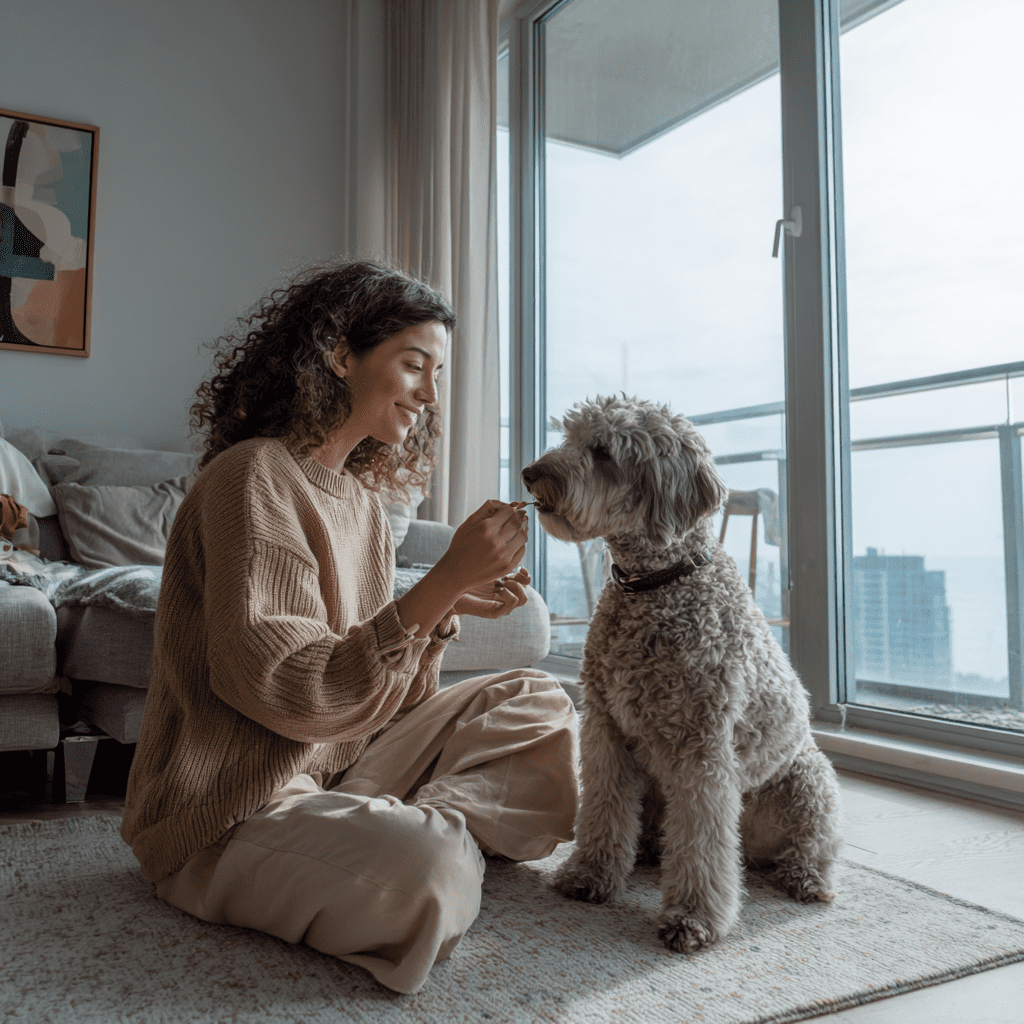Living in an apartment with a barking dog can feel like walking a tightrope between being a good pet parent and a considerate neighbor. While barking is natural for dogs, excessive barking — especially in confined spaces — can create stress, complaints, and even eviction threats. Luckily, with patience and the right strategies, you can train your dog to bark less and live more peacefully.
This guide will walk you through the causes of barking, training methods, tools, and long-term techniques that will help reduce barking in your apartment.
🔍 Why Do Dogs Bark in Apartments?
Understanding the root cause of your dog’s barking is essential before you try to correct it. Dogs don’t bark without a reason.
🐕🦺 Common Triggers Include:
- Boredom or lack of stimulation
- Separation anxiety
- Attention-seeking behavior
- Reaction to external noise or people
- Territorial instincts
- Medical discomfort
Start by observing when and why your dog barks. A barking log or pet camera can be incredibly useful for identifying patterns.
🧠 Step 1: Address the Root Cause
1. Separation Anxiety
If your dog barks when you’re away, it may suffer from separation anxiety. Symptoms include pacing, whining, destructive behavior, and constant barking.
Solutions:
- Gradually increase time away.
- Leave interactive toys or food puzzles.
- Use calming aids like diffusers or anxiety vests.
- Consider professional help or doggy daycare if severe.
2. Lack of Stimulation
Dogs need both mental and physical exercise to be calm indoors.
Daily Routine Checklist:
- At least 30–60 minutes of exercise.
- Food puzzles or treat-dispensing toys.
- Basic training sessions for mental stimulation.
- Rotate toys every few days.
3. Noise Sensitivity
Some dogs react to hallway noise, elevator dings, or footsteps.
Solutions:
- White noise machines or calming music.
- Cover windows to block visual stimuli.
- Reward calm behavior when your dog hears a trigger.
🎓 Step 2: Train the “Quiet” Command
Teaching your dog to be quiet on command is one of the most effective strategies.
Step-by-Step:
- Wait for your dog to bark.
- Say “Quiet” in a calm, firm voice.
- When your dog stops barking, even for 2–3 seconds, praise and reward.
- Repeat, gradually increasing the quiet time required before rewarding.
Pro Tip: Be consistent with tone, word choice, and rewards.
🐾 Step 3: Use Positive Reinforcement
Never yell or punish your dog for barking. This often increases anxiety and barking.
Instead:
- Reward calm behavior consistently.
- Ignore barking (if not due to fear or distress).
- Redirect attention with commands like “sit” or “place” when barking starts.
🧰 Step 4: Use Management Tools
Certain tools can support your training plan.
✅ Helpful Tools:
- White noise machines to block hallway sounds.
- Window privacy films to limit outside distractions.
- Interactive toys to occupy them when alone.
- Smart treat dispensers for reward timing while away.
- Crate training (if your dog feels safe in a crate).
🏋️ Step 5: Burn Off Energy
A tired dog is a quiet dog. If you’re busy or have limited time:
💡 Easy Solutions:
- Tug-of-war or fetch in a hallway (if allowed).
- Scent games like “find the treat.”
- Use treadmills or flirt poles (under supervision).
- Arrange dog playdates or walks with neighbors’ dogs.
📋 Step 6: Desensitize to Triggers
If your dog barks at sounds, people, or animals from the window or hallway, try desensitization.
Method:
- Play recorded trigger sounds at a low volume.
- Reward your dog for staying calm.
- Gradually increase the volume over days/weeks.
- Pair trigger sounds with treats until your dog no longer reacts.
🚪 Step 7: Create a Calm Space

Give your dog a “safe zone” away from distractions.
Suggestions:
- Set up a cozy area in a bedroom or interior space.
- Use a crate with soft bedding and calming scents.
- Keep it away from noisy doors or windows.
- Train your dog to “go to bed” on cue for self-soothing.
📉 Step 8: Avoid Common Mistakes
- ❌ Don’t punish barking; it increases fear.
- ❌ Don’t reinforce barking by giving attention.
- ❌ Don’t expect instant results — training takes time.
- ✅ Do reward silence and calm behavior.
- ✅ Do involve all household members in consistent training.
🧑⚕️ When to See a Trainer or Vet
If barking persists even after consistent training, consult a:
- Veterinarian: to rule out pain or illness.
- Certified dog trainer or behaviorist: especially for aggression, severe anxiety, or compulsive barking.
🧘 Living in Harmony: Final Thoughts
Training your dog to stop barking in an apartment is more about consistency, compassion, and communication than control. While it may take time, the rewards — both for you and your dog — are well worth it. Your home will be more peaceful, your neighbors will be happier, and your dog will feel more secure and understood.
